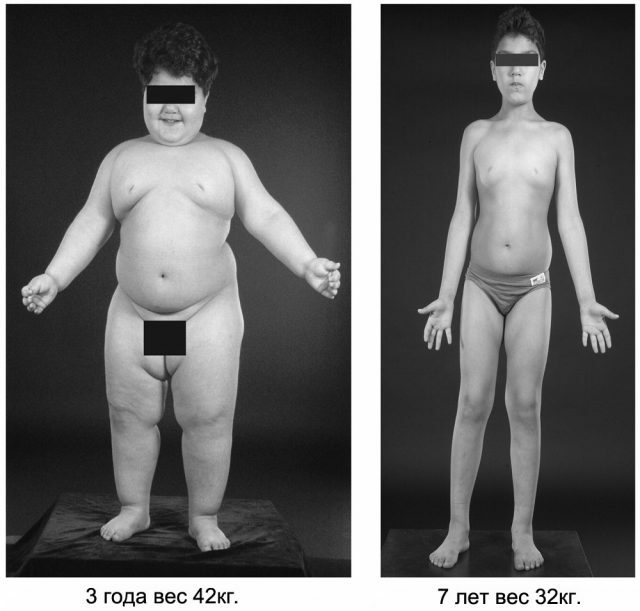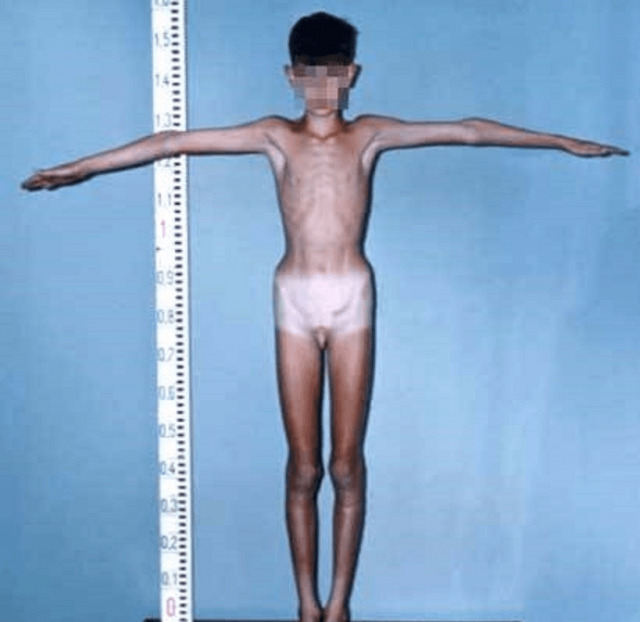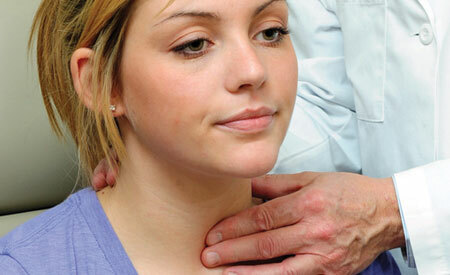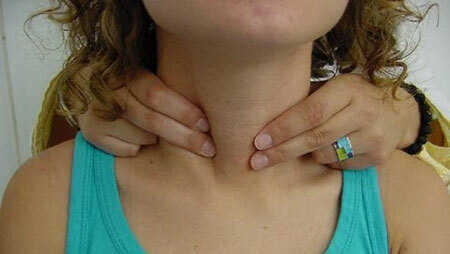Hypogonadism is a syndrome that occurs due to a deficiency of sex hormones in the body, associated with functional deficiency of sexual glands - gonads. This pathology can develop both in men and in women. In some cases, the manifestations of the syndrome are found in childhood and adolescence. Pathology is accompanied not only by underdevelopment of the organs of the sexual sphere, but also has a very negative effect on the state of vital systems and organs, the skeleton, protein-fat metabolism, etc.
Contents of
- 1 What is the disease and what are its types
- 2 Causes of development of pathology in children and adults
- 3 Symptoms and signs
- 4 Basic diagnostic methods
- 5 Treatment of pathology
- 5.1 Conservative therapy
- 5.2 Surgical treatment
- 6 Prognosis and possible complications
- 7 Elena Malysheva about malehypogonadism - video
What is the disease and what are its types
Decreased production of sex hormones in the body due to various circumstancesozhet occur in both women and men, but the manifestations of the disease will vary greatly.
Endocrinologists distinguish between primary and secondary hypogonadism. The first variant of the disease is provoked by pathologies associated directly with the state of the tissue of sexual glands - testicles in men and ovaries in women. In this case, the secret produced by the sex glands is not enough for the normal formation and functioning of internal and external genital organs.
As for secondary hypogonadism, in this case, the development of the disease is associated either with structural pathologies of the pituitary gland, negatively affecting its function, or with disruption of the hypothalamus, which controls the pituitary gland. Both forms of the disease can be both congenital and acquired.

Scheme of the location of the pituitary and hypothalamus - the organs that affect the development of secondary hypogonadism
Primary form of the disease, manifested in childhood, attracts attention by the development of the child's mental infantilism, and the secondary can lead to mental disorders.
In addition, endocrinologists distinguish the following types of hypogonadism:
- hypogonadotropic - develops due to disruption of the hypothalamic-pituitary system, manifested in a decrease in the production of gonadotropins - pituitary hormones, resulting in a decrease in androgen secretion in testicles in men and estrogen in the ovaries in women;
- is normogonadotropic - it is the result of the same disorders as hypogonadotropic, but the decrease in secretory activity of testicles and ovaries occurs against the background of a normal amount of gonadotropins;
- is hypergonadotropic, accompanied by a lesion of glandular tissue of testicles and ovaries against a background of increased secretion of hormones by the pituitary gland.
Depending on the age at which hormone deficiency developed, hypogonadism is divided into such types:
- embryonic( embryonic period);
- is prebiergate( from birth to 12 years, when active puberty begins);
- post-pubertal( from 12 years);
- age( menopause) in men and women, due to a decrease in the production of sex hormones.

Left - a boy with hypogonadism, on the right - a child without pathology
Causes of development of pathology in children and adults
Congenital primary hypogonadism can be caused by the following reasons:
- aplasia testicle( absence of one or both testicles in the scrotum);
- underdevelopment of testicles, accompanied by an increase in breast gland in men, lack of spermatozoa and a decrease in testosterone secretion( Klinefelter's syndrome);
- chromosome defects, causing short stature and malfunctions in the development of the reproductive system( Shershevsky-Turner syndrome);
- complete absence of sperm production, causing infertility, with other general norm( syndrome del Castillo);
- lack of perception of the androgens( false male hermaphroditism).

In hypogonadism, a male body can be formed according to the female type
Congenital secondary hypogonadism develops in the following cases:
- damage to the hypothalamus;
- low level of gonadotropins - Callman's syndrome, which includes external deformities( "hare lip", facial asymmetry, superfluous fingers, etc.), eunuchoidism, underdevelopment of testicles;
- dwarfism of the pituitary nature;
- congenital brain tumors;
- deficiency of pituitary functions, resulting in infertility, underdevelopment of the genital organs, eunuchoidism( Maddock syndrome).
Acquired primary hypogonadism occurs as a result of changes in testicles and ovaries under the influence of external and internal factors that occurred after birth. Among such factors it is possible to mention:
- lesions and neoplasms of testicles and ovaries;
- inadequate development of the epithelium, which forms the surface layer of the ovaries and testicles, manifested by high growth, enlargement of the mammary glands( in men) and underdeveloped external genital organs;
- Functional deficiency of testicles and ovaries, developed due to medical procedures, for example, radiation therapy, and surgical operations on the organs of the scrotum, ovaries, hernia repair, etc.
Acquired secondary hypogonadism can develop due to the following factors:
- pituitary insufficiency, provoking the development of obesity;
- pituitary-hypothalamic insufficiency, i.e.decreased production of gonadotropins and androgens( LMBB syndrome);
- craniocerebral trauma and tumors of the pituitary-hypothalamic region, in particular, pituitary adenomas;
- excess prolactin, secreted by the pituitary( hyperprolactinemic syndrome).
In addition, in the development of hypogonadism, the role of a catalyst can play the following factors:
- effects on the body of toxic substances;
- long-term use of antibacterial and steroid preparations;
- alcohol abuse;
- transferred infections.
Symptoms and signs
Symptomatic pattern of hypogonadism in men is due to the degree of androgen deficiency. In the development of pathology in the embryonic period, the child can be born a hermaphrodite, i.e.simultaneously have both female and male sexual organs. If the disease begins to develop before the puberty of the boy, its sexual development slows down and characteristic signs of eunuchoidism are formed - disproportionately high growth with a weak backbone, underdeveloped muscles, narrow chest, long arms and legs, squeaky voice. In other cases, on the contrary, a body can be formed according to the female type, an increase in breast gland and obesity can be observed. The penis and prostate gland are underdeveloped, there is no growth of pubic and facial hair, potency and libido are absent.

A child with hypogonadism has high growth with a weak backbone, undeveloped muscles, the sexual organ is underdeveloped.
. In those cases when hypogonadism develops in the post-pubertal period, its clinical manifestations are less pronounced. Moreover, with all types of disease, symptoms of a reduction in testicles in size, reduction in erection, decreased sperm production, infertility and lack of sexual desire are necessarily present. In addition, the patient complains of muscle weakness and rapid fatigue.
In women suffering from hypogonadism, the main symptoms can be considered:
- menstruation disorder or their complete absence;
- underdevelopment of genital organs and mammary glands;
- lack of hair or lack of hair in the pubis and underarms;
- narrow flattened pelvis.
If the pathology has developed in the girl after the onset of the puberty period, her sexual characteristics are regressed - the genitals are gradually atrophied, and menstruation ceases.
Not to mention the obvious signs of hypogonadism, such as hermaphroditism, in newborns, evidence of the presence of pathology may be the fact that the testicles are in a position from which they can not later descend into the scrotum-for example, they might be impeded by a connective tissue barrier. Normally, the testicle is palpable either in the lower part of the inguinal canal, or in the region of the inguinal ring and it can be easily lowered manually into the scrotum. In addition, the presence of pathology is indicated by a deficiency of sex hormones.

Hermaphroditism - formation of genital organs with masculine and feminine signs
Basic diagnostic methods
The main diagnostic task is to differentiate hypogonadism with hypothyroidism, thyrotoxicosis, Cushing's disease and a number of others.
Diagnosis of hypogonadism, first of all, is carried out on the basis of patient complaints, analysis of its anthropometric indicators, including genitals, and also the correspondence of the level of puberty to the age of the patient.
In addition, a number of laboratory and hardware studies are performed:
- radiography of the skeleton - allows to determine the stage of ossification of bone growth zones, on the basis of which the conclusion is made that their condition corresponds to the biological age of the patient;
- spermogram for men - analysis of the qualitative composition of sperm, if it can be obtained, because in some cases this is not possible;
- densitometry - determination of the mineral composition of bones, which allows to detect abnormalities and, in particular, osteoporosis;
- Uterine ultrasound for women - detection of hypoplasia of the uterus and ovaries;
- MRI of the brain for determining the condition of the hypothalamic-pituitary system;
- blood and urine tests for hormones - in the presence of pathology in men, testosterone deficiency and excess estradiol( with a tendency towards feminization) are found, and in women - a decrease in the level of estrogens and an increase in the content of gonadotropins.
Treatment of pathology
There are no general therapeutic methods for the treatment of hypogonadism - the strategy is chosen by the doctor strictly individually and will depend on the type of disease, the nature of the functional disorders, the age of the patient in whom the pathology was detected, and so on.
It is important to know that the use of traditional medicine for the treatment of hypogonadism is at best useless, and at worst harmful, since the time necessary for the effective treatment of pathology will be missed.
Conservative therapy
Congenital forms of the disease, like hypogonadism, developed before the onset of puberty, can not be cured. Therapy in this case will consist in the correction of the patient's condition with the help of life-long hormone replacement, but in general the infertility can not be cured.
In secondary forms of hypogonadism, stimulant drug therapy with gonadotropins in combination with sex hormones - testosterone and estrogen. In addition to hormone replacement, the patient may be recommended drugs that suppress the synthesis of unwanted hormones. An example is Anastrozole, which inhibits( inhibits) the synthesis of estrogen in the body.
In medical therapy of hypogonadism, women in addition to special hormonal drugs successfully use oral contraceptives, which include a combination of two types of hormones - estrogens and gestagens. After 45 years, patients are recommended to take Estradiol, Cyproterone and Norethisterone.

Hormonal drugs, used to treat both female hypogonadism, and male
It is important to know that hormone replacement is contraindicated in cancer diseases of the mammary glands and organs of the genital area, with cardiovascular pathologies, kidney diseases, liver failure, etc.
In addition, the patient is also shown vitamins and immunotherapy, therapeutic gymnastics, swimming in the pool and physical activity. There are no specific recommendations for a diet, but the patient's diet should be balanced, it is especially important to limit the consumption of foods containing animal fats and light carbohydrates.
Surgical treatment
Surgical treatment methods can be used to compensate for missing testicles. This occurs either by organ transplantation( transplantation) or by implantation of an artificial testicle for cosmetic purposes. In addition, surgically, it is possible to lower the testicle located in the abdominal cavity in the scrotum. Huge psychological damage to the patient causes maldevelopment of the penis, which can also be eliminated by plastic surgery.

Testicle descents into the scrotum - frequent operation with hypogonadism
Similar surgical procedures are performed using microsurgery techniques followed by mandatory monitoring of the transplanted organ and the hormonal state of the patient. The complex approach in the use of surgical methods of therapy allows us to resume the development of the organs of the sexual sphere, restore potency and even in some cases heal infertility. For the treatment of female hypogonadism, surgical methods are not used.
Prognosis and possible complications of
Timely adequate hormone replacement can significantly affect a patient's condition. With the help of such therapy it is possible to achieve penile growth in men and restore spermatogenesis, return of the menstrual cycle in women, normalization of bone tissue, etc. Surgical methods help to eliminate not only cosmetic defects, but also to restore the functions of the organs of the reproductive system. As for the prevention of the disease, then, unfortunately, it does not exist.
Serious functional disorders can be considered negative consequences of the disease, which become significant obstacles in the process of human adaptation in the society, this is especially acute in a teenage environment, where the realization of their difference from their peers causes moral suffering to the child. A patient with hypogonadism can not build normal sexual relations with a partner, often is deprived of the opportunity to have a family.
Elena Malysheva about male hypogonadism - video
Having noticed at oneself or your child the signs that may indicate the development of hypogonadism, you should immediately rush to the endocrinologist. Even in cases when the disease can not be cured, the patient's condition can be fully compensated with the help of adequate therapy and improve the quality of his life.



